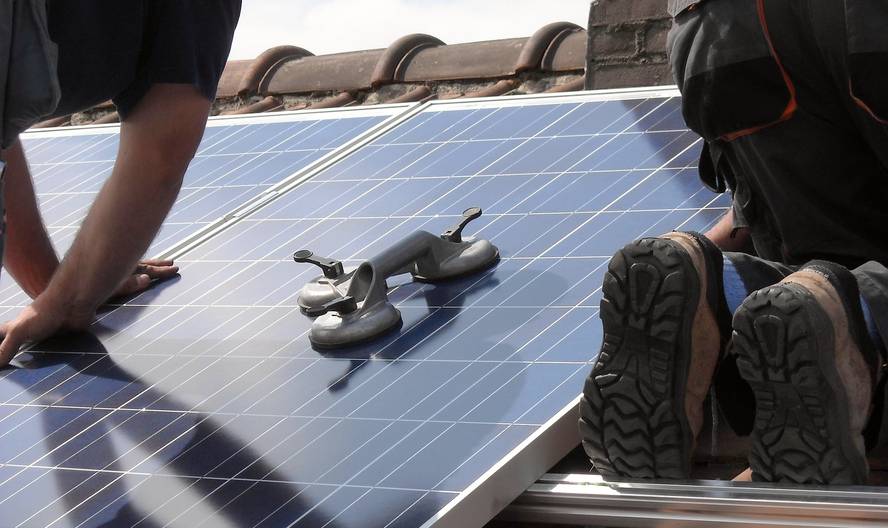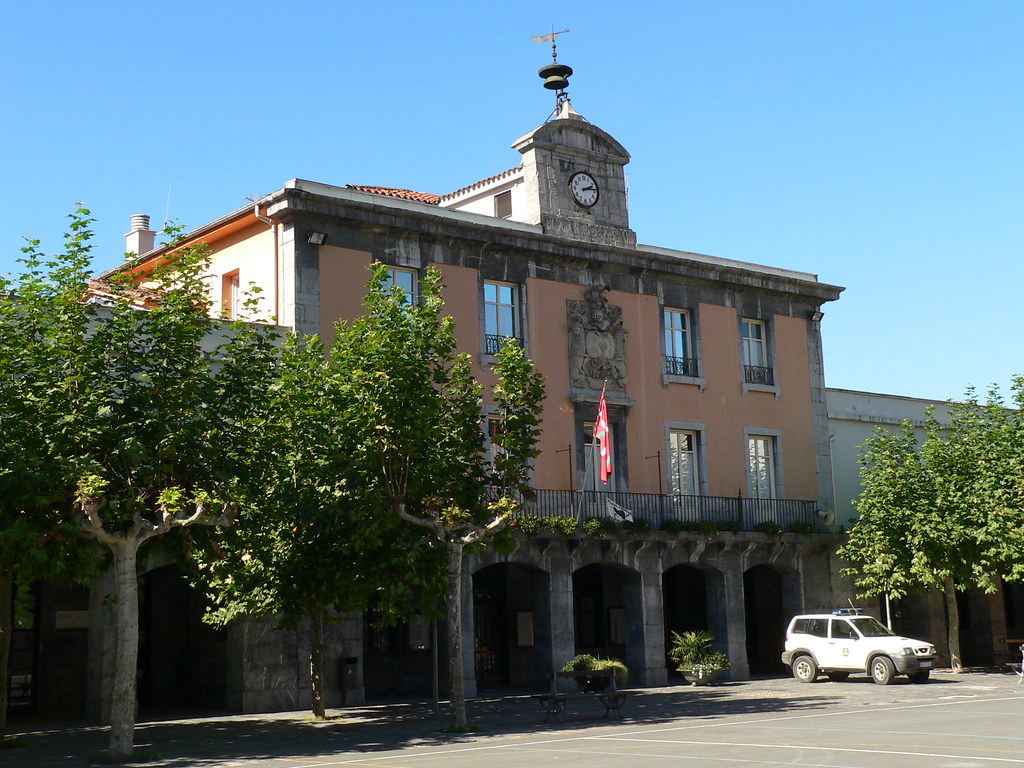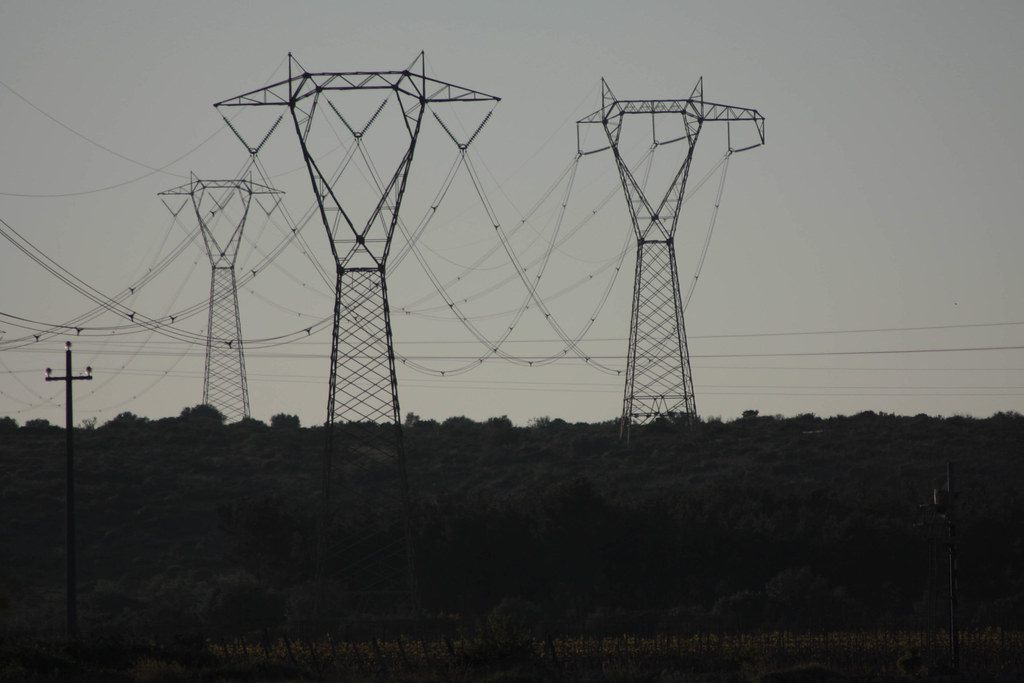On the rooftops of Vitoria-Gasteiz you can get 38% of the electricity consumed by the city
- The UPV/EHU research group Ekopol estimates that by installing photovoltaic panels on rooftops in Vitoria-Gasteiz, 38% of the electricity consumed by the city can be obtained. They came to this conclusion using a high-precision methodology that they have developed.

Cities are the ones that consume the most energy and emit the most CO2. Therefore, it is essential to establish renewable energies in them on the path to decarbonisation. In urban areas, however, very little land is available for this purpose. For this reason, the placement of photovoltaic panels on roofs is one of the ideal options. Researchers from the Ekopol research group (UPV/EHU) have measured the capacity of buildings in Vitoria-Gasteiz to do so.
They conclude that it is feasible to install photovoltaic panels in the center of the rooftop surface of Vitoria-Gasteiz and that, if this surface is fully exploited, 38% of the electricity consumed by the city could be obtained. In addition, the study confirms that the peripheral areas of the city have a greater potential for generating electricity using solar energy. In fact, in the center, the accumulation of more buildings in a smaller space and the presence of higher buildings make it more difficult to take advantage of the sun.
Researchers say this study has improved the estimates so far. They explain that the methodology they have used takes into account many local factors and allows them to have fewer errors. This methodology has allowed them to carry out high-precision studies and have found that the roof areas normally rejected for the installation of photovoltaic panels could be suitable. For example, many of those who are oriented to the west/east may be ideal for obtaining solar energy, they have calculated.
The methodology has been developed by researchers at Ekopol. It uses open source Geographic Information Systems. That is, software that is freely available to anyone, which allows the crossing of data around a specific area and the automatic extraction of conclusions. For example, in this case, researchers have downloaded maps of buildings and height maps of Vitoria-Gasteiz from public databases and, by incorporating this information into the computer program, have been able to know with great precision the orientation, shade and inclination of each square meter of the roofing surface of the city, with great precision.
On the other hand, the limit of energy viability has also been taken into account to measure the potential of roofs. In other words, they have compared the energy that would be invested to operate the photovoltaic panels in a given building with the energy that the plant can generate in it during its useful life. If it is not viable, this roof is discarded. They underline that in this sense, this evaluation system is renewed, since in most cases it is focused only on economic viability and not on energy.
They add that the contribution of the methodology developed is great and offers resources to reproduce this type of studies in a simple way in different cities. But at the same time, they wanted to warn that change cannot come only through renewable energies. In fact, even if all the viable roofs of a city were covered, it would not be enough to meet the energy demand of today’s society. Although we use renewable technologies, the researchers believe that we must approach the concept of eco-social transition, changing consumption habits and prioritizing the reduction of energy consumption.
Energia politikek haserreak eta desadostasun sakonak sortu dituzte ekologisten artean. Ez da gauza berririk. Hemen eta atzerrian. Hemen eta orain, nabarmen. Duela bi urte, 2023ko udaberrian, gure ikerketa taldeak (ekopol.eus) hiru mahai-inguru antolatu zituen Donostian,... [+]
Iberiar penintsulan apirilaren 28an gertatutako itzalaldiak, egungo energia sistemak dituen arrakala guztiak utzi zituen bistan. Enpresa elektriko handien diru gosea, berriztagarrien ezarpen masiboak dakartzan ajeak, eta herritarrok bizimodu hiper-elektrifikatuarekiko dugun... [+]
Energiaren Nazioarteko Agentziak (IEA) astelehenean argitaratutako txostenaren arabera, %2,2 igo da energia eskaria 2024an aurreko urtearekin alderatuta, besteak beste, egiturazko arrazoi hauengatik: beroari aurre egiteko argindar gehiago erabili beharra, industriaren kontsumoa... [+]
Arratzua-Ubarrundiako "Proiektu honi ez!" plataformak adierazpen hau kaleratu du, udalerri horretako EH Bilduko hiru zinegotziek dimisioa aurkeztu berritan. Izenburu hau darama testuak: "EH Bilduren moketako politika edo Iparra nola galdu".
Arratzua-Ubarrundia (Araba) herriko EH Bilduko hiru zinegotziek dimisioa eman dute Solariaren zentral fotovoltaikoagatik. Hau da hiru zinegotziek, Txetxu Zengotitabengoak, Laura Sanchok eta Javier Ruiz de Arkautek, herritarrei zuzendu dieten agur mezua.
Eusko Jaurlaritzak eta Arabako Foru Aldundiak Datu Zentroen instalazioei ateak irekitzen dizkiete horiek arautzeko legedia sortu aurretik. Bilbao-Arasur Dantu Zentroarekin, bere lehen fasea gauzatuta, eta instalatzea amesten duen Solariaren Datu Zentroarekin, 110.000 m2... [+]
Otero jauna, garai honetan artzain honek ez du tarte handirik izaten ezertarako, justuan ibiltzen naiz, baina gaurkoan ezin utzi erantzun gabe zure azken kolaborazioa. Izan ere, sortu didan egonezinak pisua du. Haserrea ere astuna egiten zait. Ez pentsatu, ordea, dela zenbait... [+]


















